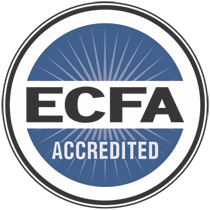Misti’s Unexpected Choice – The Real-Life Impact of True Healing
You may remember Misti’s story from this summer – an inspiring example of the healing that is taking place at our Women & Children’s Center. She and her 3-year-old son, Jaxon, has been on a journey toward a bright future ever since she entered the program, and we feel so blessed to be walking with her along the way.
Misti has done so much hard work over the last nine months with us, addressing her past trauma and her addiction. It is especially apparent in the growth of her son, Jaxon, who Misti has watched transform into such a great kid.
We have been talking a lot about generational healing this year – a concept that embodies the ripple effect of one person’s life-transformation. Misti and her son are a great example, as we have already seen the ways in which Jaxon’s life has been changed, and is on the path toward a healthier future.
There are two things we have seen at play as we have watched Misti’s story – one being the tangible resources she has used throughout her time here, and the second being the relationships she has built in this community. These two things have been essential in her growth and are perfectly illustrated by a recent decision Misti made regarding her house situation.
Sitting at the dining table in the Women & Children’s Center, Misti is excited to tell me about the application process for an apartment here in Central Oregon. She is proud of how far she has come and is anxious to continue moving forward with Jaxon.
“I decided not to move out!” She exclaims, beaming. This is not what I was expecting, but it soon becomes clear why Misti is so happy with herself.
She tells me about the different reading materials, therapy resources, and processing exercises she finds helpful in her growth. She explains how she uses the concept of “Opposite Action” often in her life, and that it is a key factor in her decision about the apartment.
Misti was ready to move out – she was excited to have her own space and to build a home for her son. The application process was tedious, and after pouring over the paperwork she submitted everything and was soon approved.
When she got the news, she felt a familiar rush – that physical anxiousness that in the past lead her to make decisions without taking the time to really think things over.
“I had to stop and remind myself to slow down – I had to do the opposite action of what I would usually do.” Misti recognized that instinct to rush ahead – a survival instinct that is very common in individuals who have experienced trauma, homelessness, or addiction.
Instead of making a decision based on that instinct, she stopped and used the tools she had been practicing over the last nine months. All of the books she had read, all of the therapy sessions, and all of the self-evaluations had taught her what to do at this moment.
She carefully re-read the contract from the renter – all the way down to the fine print – and took notice of some changes to the agreement that had been made.
“I re-did my budget with these new details, and things didn’t add up,” she recalls. The terms had changed, and they were no longer a reasonable fit for Misti’s plan.
So, she called her sponsor to talk it over. Then she called her mentor. She used her community of support to help her process and make the right decision before jumping into a situation that may have been more harmful to her future than helpful.
In the end, she knew it was not the right move for her and her family, so she decided to continue looking elsewhere.
“I have learned a lot from DBT (Dialectical Behavioral Therapy). Things like how to ‘cope head’ for different outcomes and to be mindful of my emotions. It has taught me to think about things and to feel things without just reacting.”
The Connection Between Resources and Community
These educational tools have been critical for Misti. Even so, these resources are only one part of the equation. Misti has had the opportunity to practice these new skill sets in a place surrounded by accepting and supportive people. She has had a community to lean on, to be lifted up by, and to hold her accountable.
These relationships are what heal. They rebuild trust, they teach healthy boundaries, they inspiring confidence, and honesty, and they work hard. Because Misti had trustworthy, healthy individuals in her life that she could call in this moment of processing, she was able to make an educated choice.
This is an aspect of the healing process that is often overlooked in recovery programs, and we believe it is what sets Shepherd’s House Ministries apart. The on-going community support is what makes lasting life change possible. This life change is real, and we see it happen in increments every day in people like Misti.
The concept of generational healing is so important to remember as we grow forward. The work being done today with this one woman will go on to touch the lives of her family and community for years to come. The trajectory for these lives is reset, and all those who are a part of their story from now on will be better off. Addressing cyclical pain and addiction does not just disrupt the cycle for one person – it disrupts the cycles of their community moving forward.
The impact you have reaches farther than you can possibly understand. When you support Shepherd’s House Ministries, you are changing the trajectory of not just one life but many lives.
It is only because of people like you who donate and volunteer, that we are able to watch these transformations take place. The ripple effect starts with you – donate today and make a positive impact on someone’s future!
Generational Healing Begins with Your Donation!
Donate right now to make a lasting impact on the lives of these women and children. Your contribution has the potential to start a ripple effect of healing and change for generations to come! We cannot provide these critical resources and community without you!


